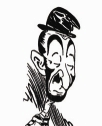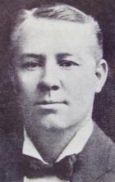AustLit
-
Many of the records in the Australian Popular Theatre project have the AustLit work form 'Musical Theatre' applied. This is further defined using genre terms to more fully describe the style of work included.
-
Burlesque
A humorous theatrical work involving parody and grotesque exaggeration of serious or well-known plays, operas, classical legends and children's stories. Nineteenth century burlesque featured songs and lively dancing, chorus girls (often semi-clad), comic buffoonery and cross-casting, all fashioned into an energetic spectacle, e.g. Garnet Walch's Pygmalion and His Gal (a Dear!), or, The Celebrated Living-Stone of Ancient Athens (No Relation to the Doctor).
Opera
(includes Comic Opera and Operetta)
A dramatic form which uses vocal and instrumental music to convey story, emotion and entertainment. Closely related to drama, using the theatrical elements of stage action, scenery, costumes and dialogue. In opera, however, the words are traditionally sung rather than spoken, e.g. Montefiore's Don John of Austria.
-
Pantomime
Traditionally a seasonal entertainment (although not confined to Christmas or Easter). A form of musical theatre comprising comedy, music and physical action. It also favoured well-known stories (particularly fairytales) and spectacle. Often presented on two levels – one for children, and the other for their adult company with topical references and adult jokes, while retaining a child-like world of fantasy e.g., The House That Jack Built, or, Harlequin Progress and the Loves, Laughs and Labours of Jack Melbourne, and Little Victoria : A Fairy Extravaganza Opening to Pantomime.
Revue / Revusical
Revues are a form of popular culture entertainment in which unrelated sketches comprising elements of song, dance and dialogue are organised around a unifying idea or theme (usually intimated in the title). The genre traditionally features comedy and topical references, often with a sharp satiric edge, e.g. Frank Dix's 'Come Over Here'.
Revusicals are one-act musical comedies that feature comedy and song and dance. While closely aligned with intimate revue in terms of production values, the revusical differs through its use of a storyline to hold the various sketches and improvised scenes together. The Australian revusical emerged primarily as a vehicle for two principal comedians, who were supported by a small but versatile ensemble of variety performers and six scantily-clad chorus girls, e.g. Nat Phillips's 'Plumbers'.
Sketch (Theatrical)
A sketch, in the theatrical sense, generally refers to a short play or performance of slight dramatic construction and often of a light or comic nature. Although the term has been applied to a number of related popular culture genres, notably farce and revusical, a sketch invariably differs in terms of the number of performers, the style of presentation (particularly in terms of comedic delivery), and production values. Generally speaking, a sketch is presented by a small ensemble of performers (up to about six, and commonly with only two or three actors). It may or may not involve musical performance. In comedy sketches the humour is less physical (as with farce), relying more on verbal and psychological interplay, e.g. Jim Gerald's 'The New Recruit'.
You might be interested in...






